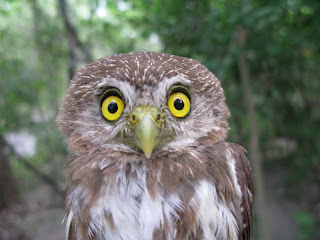Today I will write on a topic that I usually think of and use when talking to the open non-scientific society about conservation: charismatic and non-charismatic animals. In general, people tend to care for mammals and birds over all other animals, especially for those who are amazingly colorful, or sing harmoniously, or are catalogued as “cutest little things”, right? This tendency is partly due to the fact that these animals are warm-blooded and we identify ourselves with them to certain level. The point is, do we have the right of becoming judges in deciding if we should care for species considered “nonatractive” and subconsciously assign them a lack of value? Based on our taste, mood, background, homeland, friends circle, lack of information or a combination of some of these and other factors people have the perception of doing what they considered they should with animals, and fairly frequently holding only a utilitarian perspective. For this, I broadly mean, if a species or object can be of some benefit, I will care for or do something for it.
A good example to illustrate these ideas comes from birds and bats (part of my personal passion in life!).
Birds are nearly 10,000 species worldwide and roughly 10% are under some category of conservation concern. Most bird species are active during day hours (another reason for being more in contact with them) and can use and live in the air, land, fresh, brackish and sea water. Speaking of mass or size, birds cover from 2 gr (Bee Hummingbird in Cuba) to 160 Kg (Ostrich in Africa and introduced by humans to several other regions of the world). Birds are well-known for pollinating flowers and dispersing seeds of several hundreds of plant species, eating tons of insects, other invertebrates and vertebrates every year, eating up putrid road-killed animals along our highways, contributing to the recycle of nutrients by excavating nests on trees, leaving animal and plant remains almost everywhere where they eat or defecate or die, or simply by allowing us to enjoy either their beautiful elaborate songs or majestic plumages in the sunny days of the breeding season right in the background of our homes, backyards or forests. So, why we should not care for birds right? Even more, we do not have to read a long, dully-written scientific paper to perceive these roles. By just paying attention and watching our natural surroundings in any day of our lives we could easily witness and appreciate the presence of birds.
As concerns for bats, there are about 1100 bat species recorded in the world and nearly 10% of them with different categories of conservation concern. In terms of numbers, birds and bats seem pretty even, right? Now, when speaking of ecological roles, amazingly enough is to mention that bats perform pretty much the same roles that birds do: disperse fruits, pollinate flowers, and, when eating, regulate outstanding numbers of invertebrates and vertebrates. Unfortunately for bats, they do not sing nor have brightly colorful feathers. The vast majority of bat species are nocturnal (partly explaining why we do not see them as frequently as birds) and live in almost all types of ecosystems (except in the poles). Interestingly, bats are the only mammals with the capacity of real flight, have a few species that feed exclusively on blood and have developed “echolocation” (a sensory system that works like sonar) to move around (small insectivorous bat species have this sonar system well developed). The smallest bat in weight is the Bumblebee bat with 1.7-2 gr (southeastern Asia) and the heaviest bat species is the giant golden-crowned fruit bat reaching up to 1.5 Kg (southeastern Asia). So, when comparing birds and bats is some easy to remember characteristics, they are similar with the exception of being unattractive to the human eye! To make this matter uglier for bats, very unfortunately, bats have an undeservedly bad, or even worse evil, reputation among humans. Movies, science fiction novels, and word of mouth have contributed to this undesirable reputation. There are currently many more movies, video clips, documentaries, books, magazines, articles, and journals on birds than in bats in internet and in libraries. If you are curios enough, give it a try and compare the number of any of this examples in nearest library of just check on your favorite internet search tab.
Birds and bats have a tremendous relevancy in the stability and well-being of our ecosystems where we obtain most of our vital resources every day (oxygen through plants and food to mention a couple). Very sadly, both of them have species that are being negatively affected by several factors related to humans. When asking people about the importance and preference between these two groups of warm-blooded vertebrates, 80% of adult attendees in the audience (over 18 years old) have preference for birds over bats and did not know about the similar ecological role of them. If preference and/or lack of information play a key factor towards this attitude, is there anything that people with a graduate education level in environmental sciences can do about it? Perhaps share our knowledge with the public in any facet that we feel comfortable with and have abilities with: writing for the mass media? Speaking in public? blogging? Creating web pages? At the end, being cataloged or called “ugly or unattractive” in our human society has not been ever an issue, right? My co-responsibility in conserving our biodiversity (e.g., birds and bats) goes beyond generating knowledge and developing scientific papers. I am always questioning myself on how to direct my capability and abilities towards making society more aware of our current environmental situation and engaging them into local hands-on actions.






I love it! What a great way to give bats a boost--comparing them to birds is a great idea!
ReplyDeleteHere's a nice bat poem for you by Richard Wilbur: http://audiopoetry.wordpress.com/2007/06/15/mind/
I love the pictures & enthusiasm in your blog!